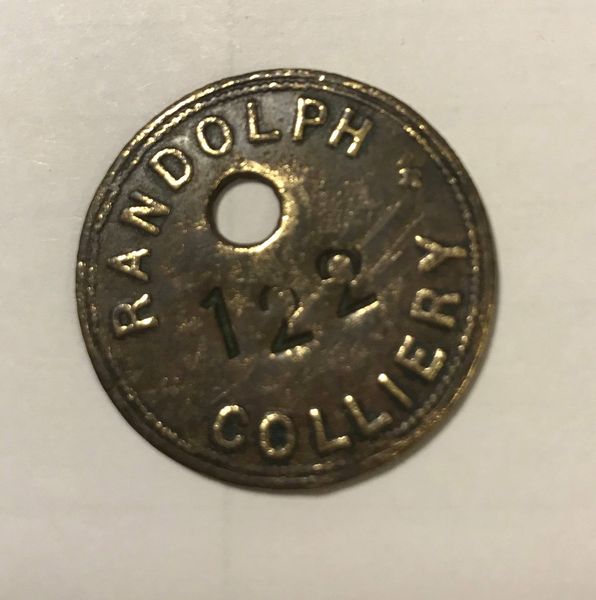In 1891, the North Bitchburn Coal Company Limited (NBCCL) bought out the Evenwood and Thrushwood Collieries and immediately sunk new winnings at Evenwood and Cockfield. At Randolph, sinking commenced in 1892 and coal was drawn during 1893. Within 10 years, the older pits, Evenwood and Thrushwood, which had been working for some 60 to 70 years, were closed down and interest concentrated on the new collieries, Randolph at Evenwood and Gordon House at Cockfield. In 1895, construction began on coppee patent coke ovens at Randolph Colliery.
Why Randolph? Because, an Evenwood Colliery had been working since about 1840, a new name was required for the new colliery at Evenwood. William Randolph Innes Hopkins was the Managing Director of the North Bitchburn Coal Company Limited. The name Randolph was chosen. Output reached a peak during the war years of 1914-1918 when approaching 2,000 men and boys were employed at Randolph and Gordon House Collieries.
In 1920, Pease and Partners Ltd. purchased NBCCL and it worked as a subsidiary from 1921. In 1932, Peases refused to fund any further losses and the company was placed in the hands of the receiver. Some assets were transferred to other companies in lieu of debt such as Thrislington Colliery which was transferred to Henry Stobart and Company. The profitable sections of the operation were transferred to a new company, the North Bitchburn Fireclay Company.
In 1933, the Summerson brothers from Cockfield bought Randolph and Gordon House Collieries and operated under the trade name, the Randolph Coal Company Limited.
In 1947, nationalisation brought collieries such as Randolph and Gordon House Collieries into public ownership and between 1947 and 1962. These pits were closed by 1960 and their associated drift mines namely Esperley Lane sunk in 1954 and the Hutton Drift sunk in 1953 were closed by 1962.
Randolph Coke Works was retained in private ownership and finally closed in 1984.
Below, 1898 map to show Randolph Colliery and Coke Works

Below, 1898 Randolph Colliery.


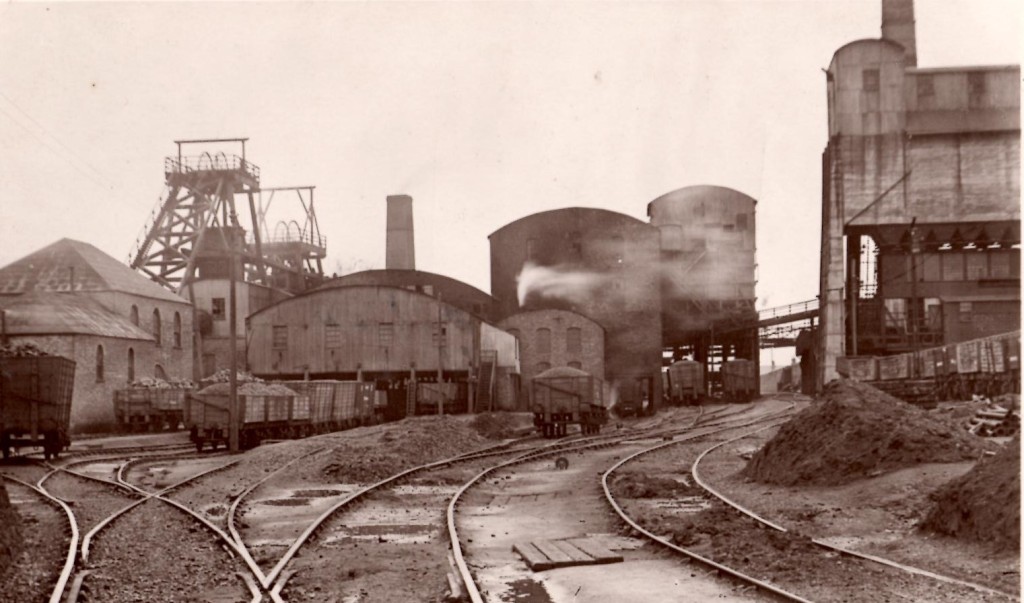

Below: c, 1900: Thomas Heslop (1858-1923), the colliery manager is standing far left, next to him standing possibly Peter Moon, unknown, Jack Thorburn and “Curran” Heseltine in the centre with the lamp. Sadly, the names of the others are unknown.
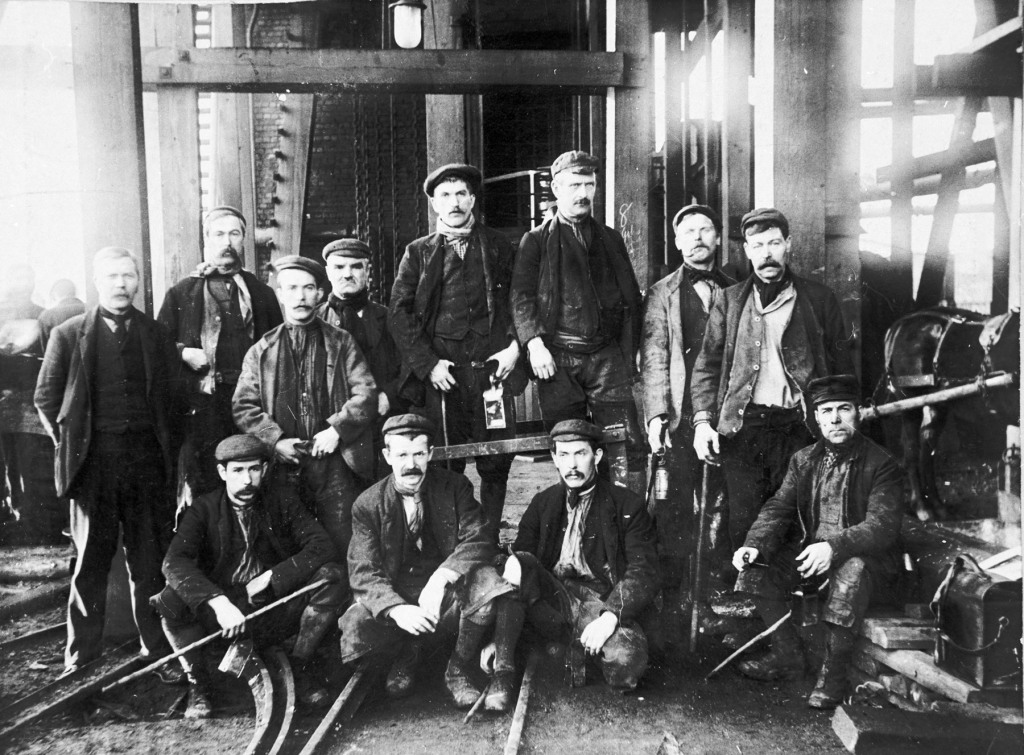
1900 August 24: There was a Royal Visit to Randolph Colliery – Princes Alexandra, the Duchess of York (who on the accession of King Edward VII in 1901 became Queen consort), was accompanied by Lord Barnard. The party was given a guided tour by the managing director of NBCCL, William Randolph Innes Hopkins and other officials of the company. The photographs below were taken at the time of the visit, courtesy of Beamish Museum.
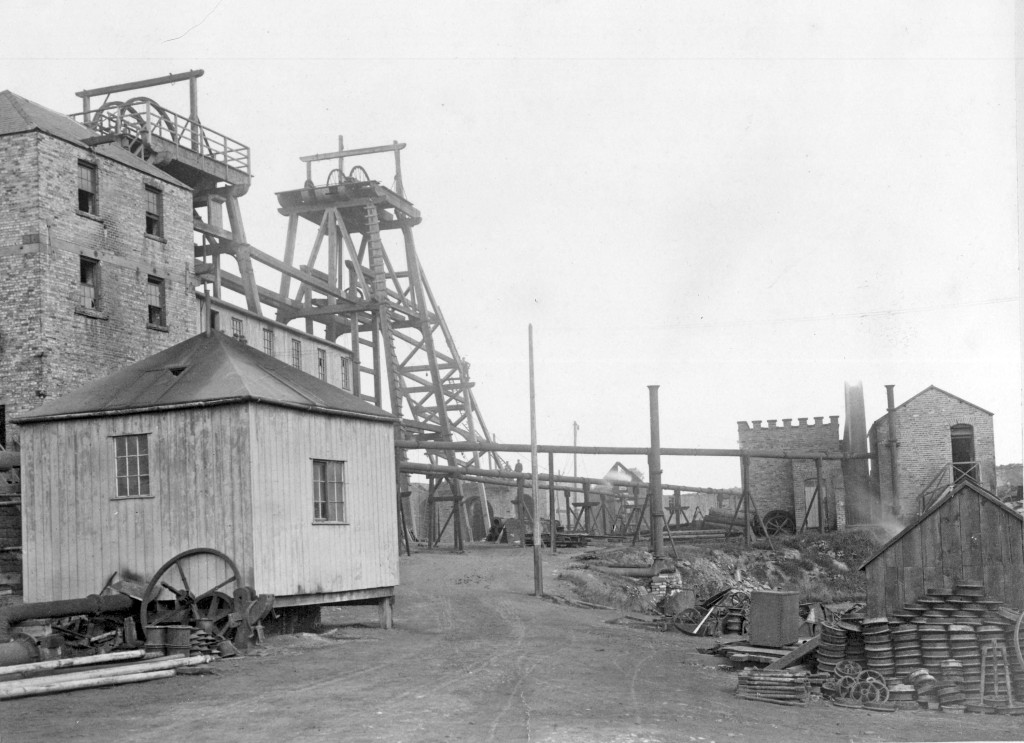



Below: Johnson Welch, overman
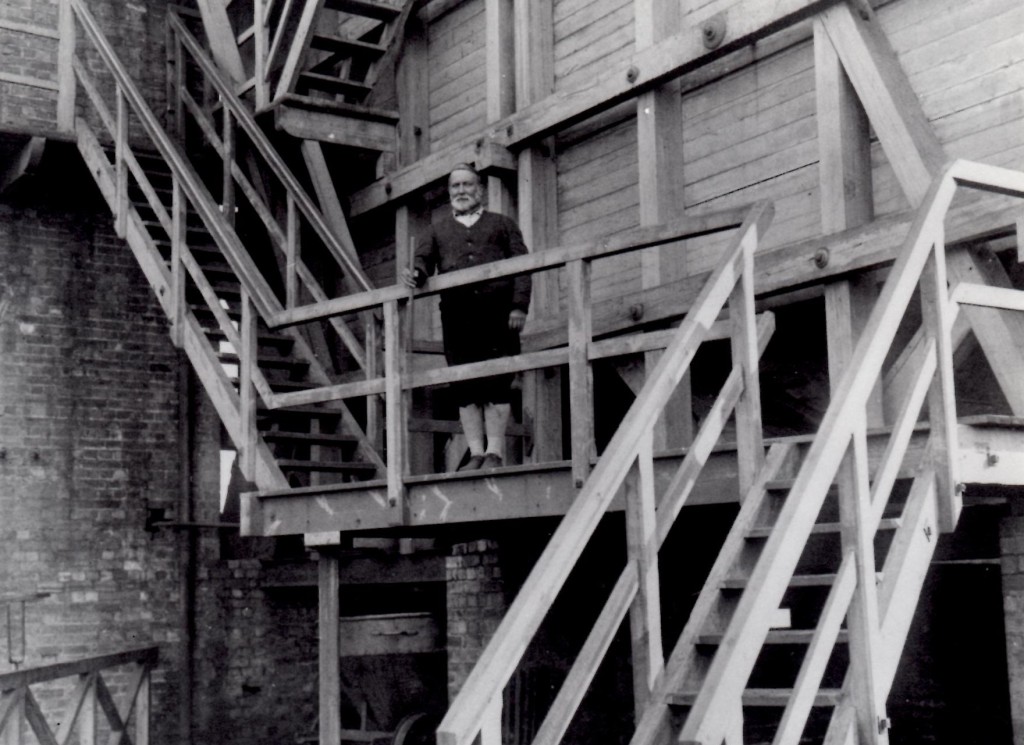

More photographs of pitmen at Randolph
Below, Hewers waiting for the cage. Brownless Robinson, standing in the centre of the group.

Below: c.1914: Back L to R: Isaac Wade, Jack Purdy, Bob Hodgson, “Pot” Thorburn, T. Hodgson, unknown, T. Purdy, ? Reed. Front: Ben Robson, unknown, unknown, Fred Wade, J. Bradley, J. Stokeld, W. Metcalfe.
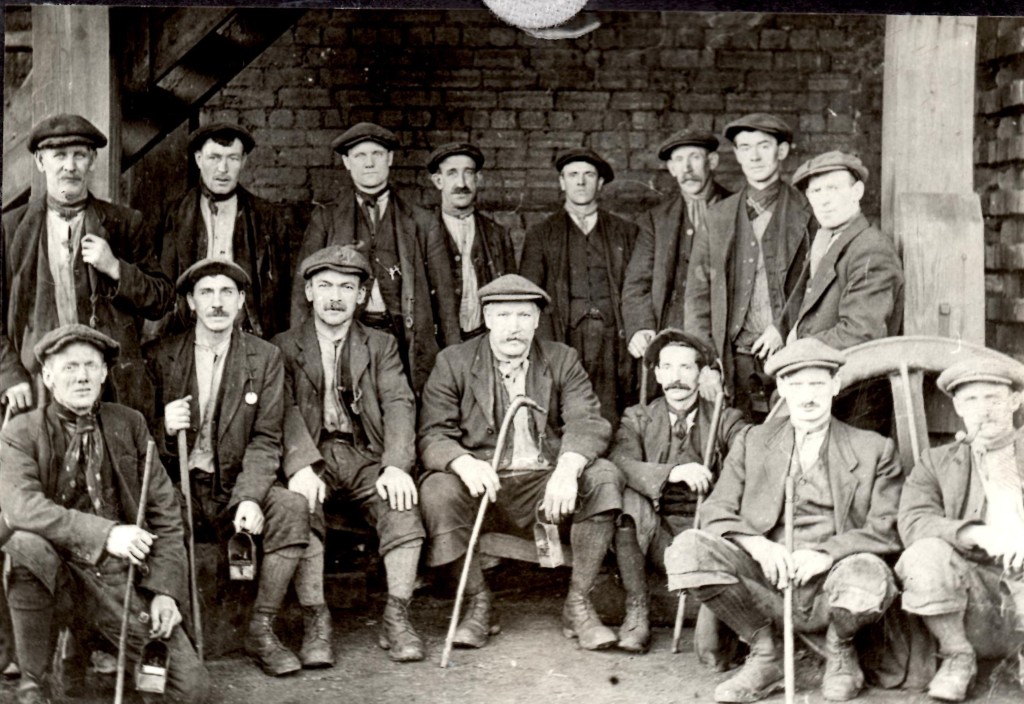

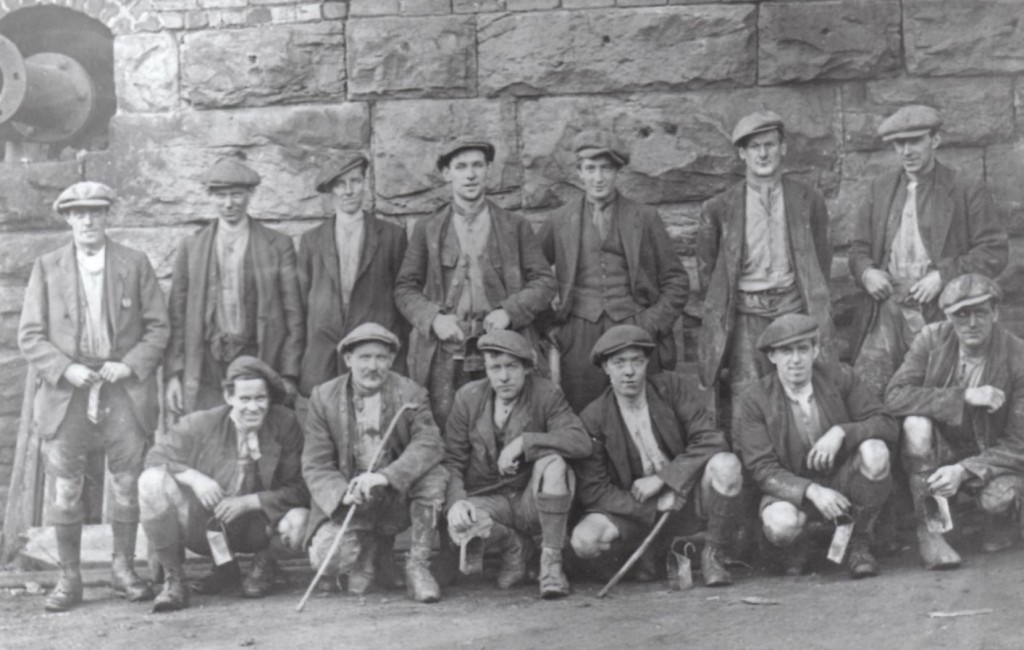
Below: c.1914: L to R: H. Maughan, J. Walton, J. Taylor, ? Taylor, Jack Ellerker, ? Towers.

Below: Joe Nicholson second right.
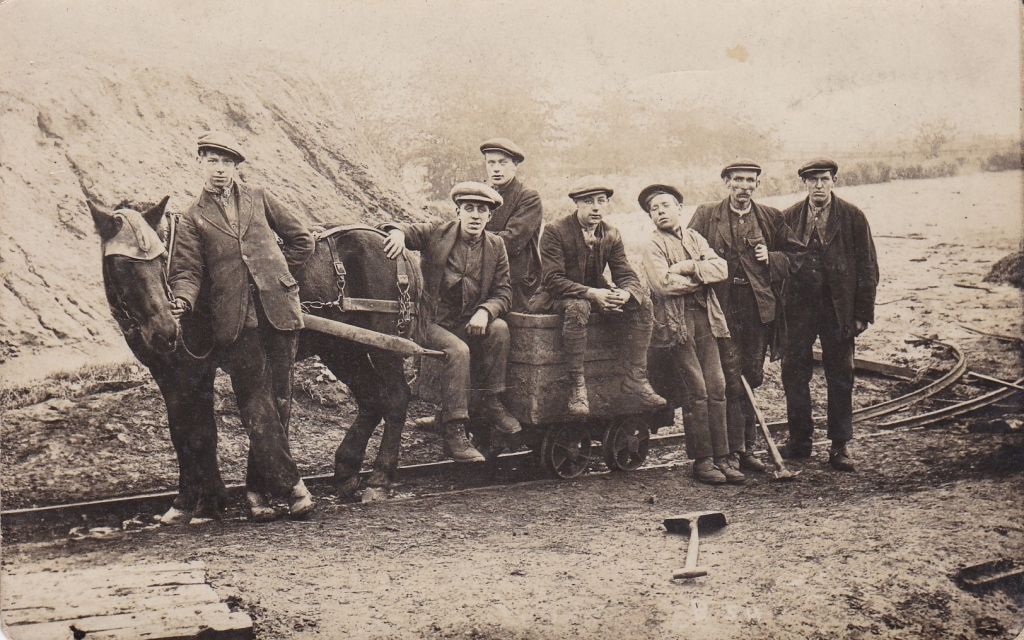
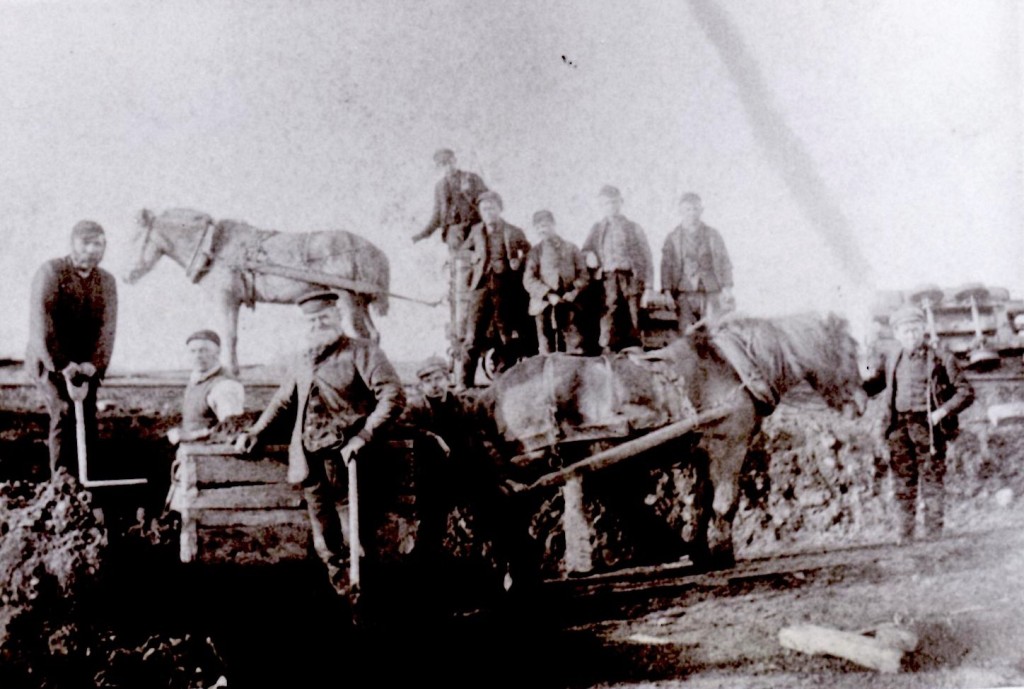
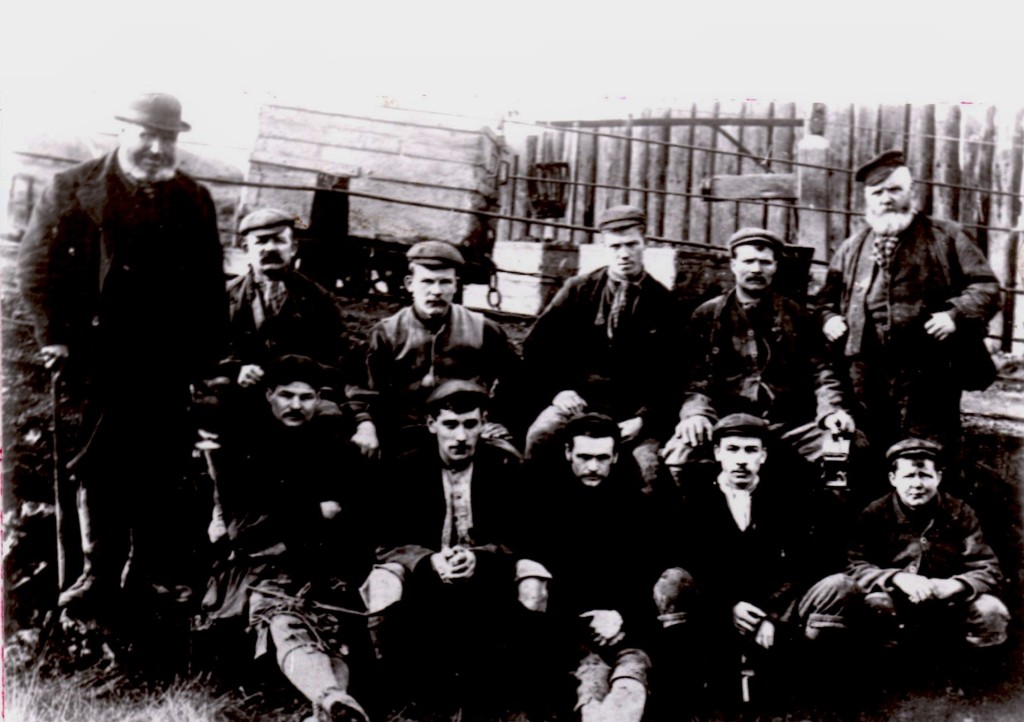

Coal mining was always a dangerous occupation. By way of example, in 1936, Cleveland William Orton, aged 34, from Cockfield was killed by a runaway tub at Randolph Colliery. George Linsley from Swan Street, Evenwood gave evidence at the inquest. Thomas H. Blaiklock was the manager and agent for the Randolph Coal Co. also provided evidence. He lived at Fairfield, Evenwood. Dr Milne of Evenwood stated that there was no doubt that the cause of death was fracture of the skull and injuries to the body. The verdict was, “accidental death”.
Below: A detail from the press report

Below: Randolph Colliery: L to R: Bob Blenkinsopp, Mathew Mason but others believed this to be Mowbray Maughan, next 2 unknown.
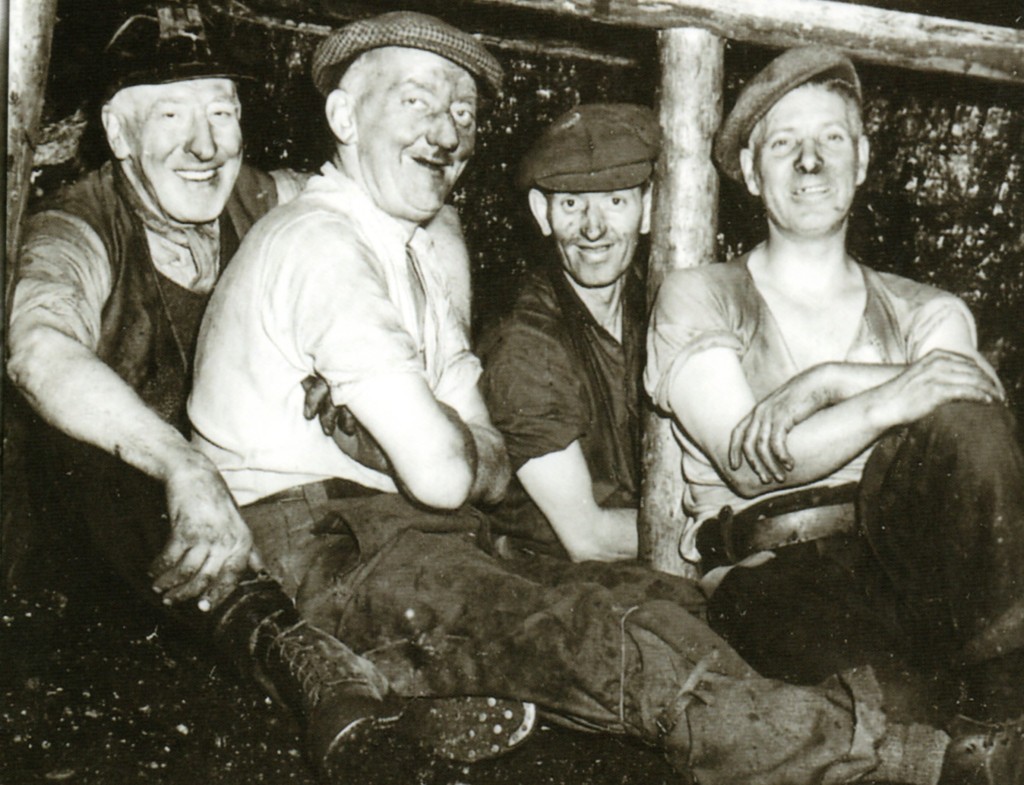
Below: Randolph Colliery Manager Henry Holt became NCB Area manager. He is photographed here, 2nd right, presenting Jack Fuller of Vane Terrace, Cockfield with an NCB Long Service Certificate. Robert Linsley is between them. The chap on the right is believed to be Mr. Ranson, under-manager of Gordon House.
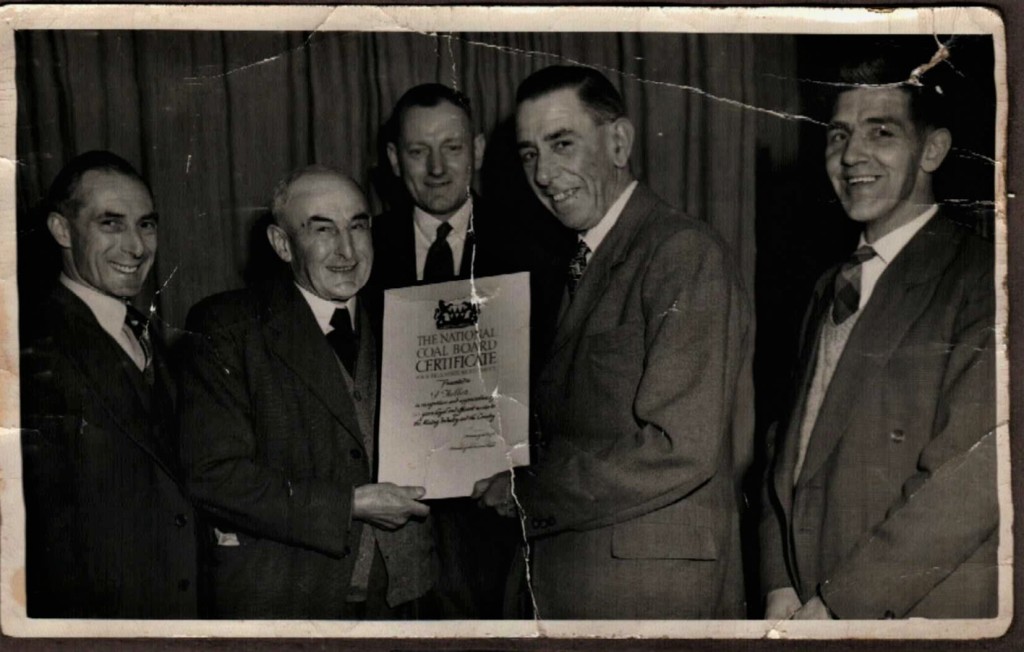
Below: c.1960 Hutton Drift miners. Back row: Ronnie Lamb, Jim Clark, Jackie Bell, Jackie Towers, Norman Robson, C. Pattison. Front row: Freddy Bell, George Knight, Alf Sams.
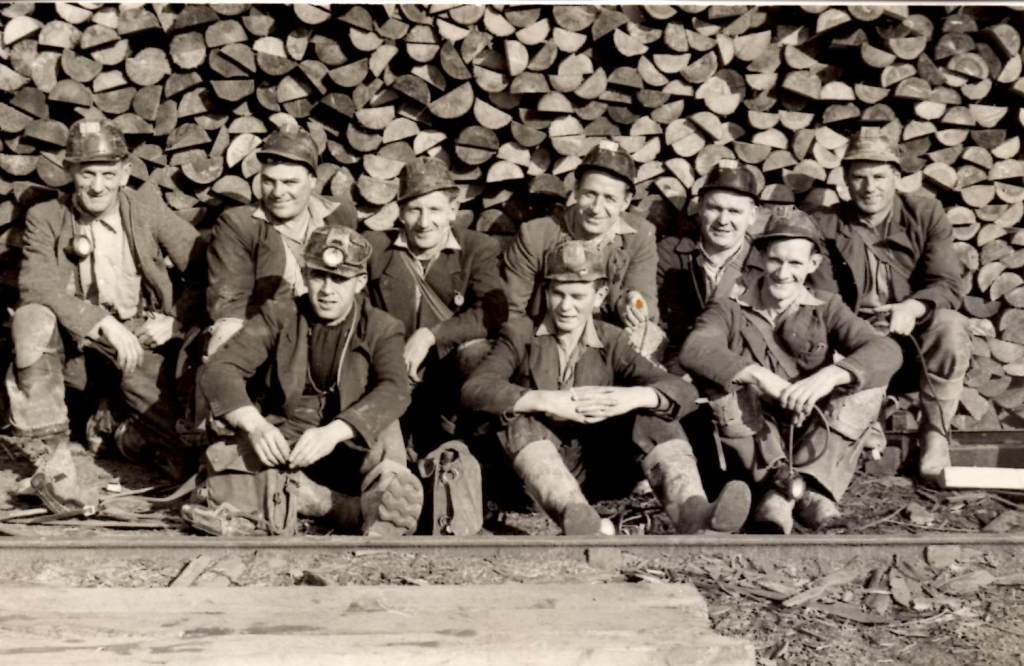
Below: Closing of Friday: Left to right: Jack Towers, Joe Featherstone, Norman Proud, Alf Sams, Jack Francis & Harry Danby
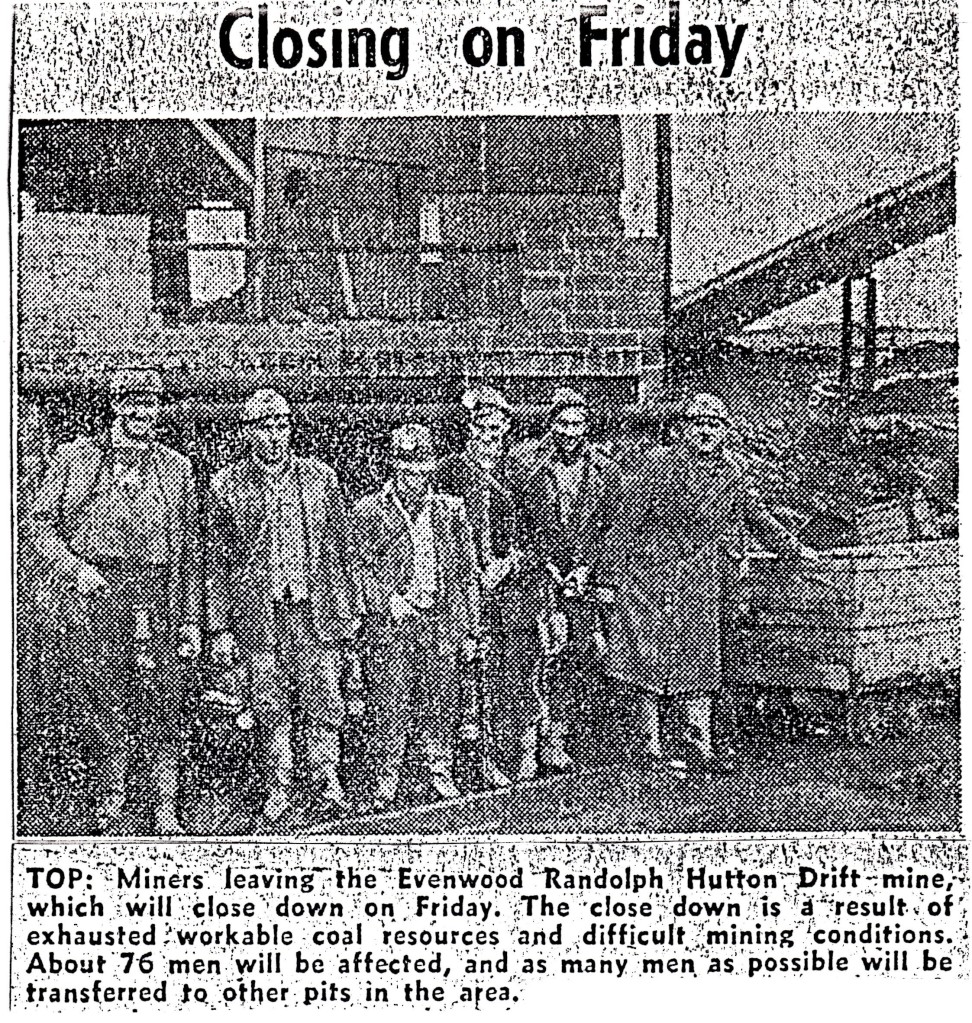
15 April 1898: An Account of Randolph Colliery [1]
By the courtesy of the chief agent of the North Bitchburn Coal Co., Mr. C. Widdas of Beechburn Grange, the members of our club visited Randolph Colliery, near Evenwood, on April 15 1898. Randolph Colliery, the property of the above company, is situated at the extreme south west boundary of the Durham coalfield, the Coal Measures cropping out to the surface south of the colliery. The Wigglesworth Fault has thrown down a large area of the coal measures to the south of the fault and thus preserved and enriched the Durham coalfield to a considerable extent. The Randolph Royalty consisting of about 1000 acres is situate on the south side of the above fault.
The shaft which is about 94 fathoms[2] down to the point where it taps the Brockwell Seam, is some short distance from the fault. The strata passed through embraces 4 workable seams viz. Hutton, Harvey, Busty and Brockwell. The 2 latter only are worked at present and the Busty only on a small scale. The shaft bottom is at the deepest point, the seam rising south at an angle of 5.58 inches per yard. The Brockwell Seam is about 5 feet 6 inches thick, with a top layer of cannel coal 1 foot 2 inches. The cannel, not being of any commercial value, is left to form the roof, and a first class roof is the result. The seam is tapped by an incline plane, driven at an angle about midway between dip and strike of strata, securing an average gradient of about 2½ inches per yard. This allows of automatic manipulation.
The road is double for most of the distance. The sets are made up of 26 tubs, each tub weighing about 5cwt. and carrying a load of about 7½cwt. The full set down to the pit eye pulls up the empty set to incline top, a distance of 900 yards. The tubs from the rise are lowered by dillies, 2 at a time, down incline roads, with a dip of 5.58 inches per yard, the full tubs down pulling the empty tubs back. In each case it was demonstrated that sufficient brake power was available to stop the load within a very short distance, at any part of the journey.
The stables, in which 54 ponies are lodged, groomed and fed were models of cleanliness and comfort and are lighted by electricity (as was also the pit eye), conducted from the generating station at the surface. The ponies appeared to be in first class condition and very docile. Every care seemed to be exercised in trying to secure their comfort.
The Busty seam is about 18 fathoms higher up the shaft. It does not conform to the Brockwell as regards inclination being much greater. The same arrangements are found about the pit eye, as in the Brockwell and in the stables 9 animals are cared for. The seam is about 3 feet 2 inches thick and preparations are going on to lay it out in the same manner as the Brockwell.
The shaft is entirely lined with fire clay lumps, is furnished with wood guides and flat ropes, about 5 inches wide and 1¼ inches thick, are used.
The cages are double deckers, each deck being 4 feet 9 inches high. They carry 2 tubs on each deck. The attachment of the rope to the cage is by means of Walker’s patent detaching hook; overwinding is thus practically impossible.
Every member of the party descending was supplied with an outfit consisting of stick, coat, cap and lamp, most of the latter being safety lamps of the Muessler type.
An output of 800 tons per day is most expeditiously dealt with on reaching the surface. Mechanical versus hand labour seems to have been definitely settled here in favour of the former.
The waggons after leaving the cage travel by gravity to a creeper which grips them by the axle and propels them forward up a short a short incline. This gives an elevation of 2 feet. Gravity does the rest. They now travel on a down gradient and on a road suitably curved to transfer them to the opposite end of the cage to which they left when full. While they are making this circuit they pass through side tipplers of the most improved type. The waggons with tippler make one complete revolution, the contents being deposited on to the top of a jigging screen. Very little small is made with during this tipping process.
The screen is made with circular apertures of about 1 inch to 2 inches in diameter. The round coal, as it drops off the screen, falls on to a belt and thus slowly travels along in a thin layer and finally passes into railway waggons placed underneath to receive it bur during its passage a number of men and boys are picking out all the impurities. A first class clean, round sample is the result. The smaller coal, which passes through the apertures of the jigging screen, is collected and passes to another belt, running at right angles to the former one. It is then taken up by elevators, dropped on to a rotary drum composed of 3 cylinders, the first taking off the large nuts, about ¾ inch, the next the seconds about 5/8 inch, the next the thirds about ¼ inch, the still smaller being dealt with under system no.2. These 3 sizes are worked. The dirt being of a higher specific gravity than the coal, the coal can be hushed off, while the dirt remains till more force is used. This process takes place on the upper floor. The clean washed coal is now conveyed from washer to hopper waggons and then to the coke ovens. The surplus water and very small coal pass down to the next floor, where a splendidly fitted-up apparatus absolutely washes the very smallest of the coal. In this case the water forced up through the screen bottom, the bottom being lined with a layer of feldspar, on the top of which lays some coal to be washed. When the water is forced up from below it lifts both the feldspar and coal, but the feldspar being heavier drops first, forming a layer upon which the coal comes to rest but every time it is thus disturbed, owing to its greater specific gravity; some of the dirt finds its way down through between the feldspar particles; this coal is also, when cleaned, passed on to the coke ovens. The surplus water finds its way into a huge tank below and, as some of the finest particles of coal are carried down with the water, a mechanical scraper on the bottom of the tank collects the sediment at one end; a set of elevators conveys this above again and it passes into the waggon, generally to be used at the coke ovens.
The necessary water for all these operations is pumped from the pit. The water in all the washing plant is used over and over again, just requiring the waste replenishing. A centrifugal pump in the collecting cistern forces the water to the top of the building, to begin its energetic course again downward.
The coke ovens, of which there are 84 in number, are about 30 feet long, 7 feet high and 2 feet wide and each when charged holds about 6 to 7 tons of washed coal and is provided with 3 circular openings at the top to facilitate an equal or level charging. After being thoroughly closed for 48 hours, the temperature reaching 2,000 degrees Fahrenheit, it is converted into a coke of very good quality. When drawing a charge, the doors are lifted by a crab and a mechanical ram forces out the charge, consisting of about 4 tons. The miniature Vesuvius was soon cooled by a plentiful supply of water (supplied again from pit pumpings) and a hose pipe to direct the steam and in a short time was placed in trucks, which are standing conveniently and thus made ready for market. The average production is about 1,000 tons per week.
The gasses from the ovens are collected into a flue at the end and in part is conducted to 2 boilers at the other end of the ovens. They are thus always supplied with heat at a regular temperature and, with very little attention, require no other fuel.
The air supply to the ovens is conducted from the ends and is therefore warmed before entering the ovens. The steam generated at those 8 boilers supplies all the mechanical force necessary for the pit-top requirements and to drive the fan, which is a Waddle, 30 feet in diameter, keeping a good ventilation throughout the underground workings. It also drives the dynamo for the electric lighting plant.
The washing plant is the Luhrig patent, the coke ovens by Coppée, were built by the patentees and are lined with best Scotch silica bricks. Both departments do credit to those who invented them and to the company and officials who have adopted them for use. The old rule of thumb method has no place here.
Plans and sections of internal arrangements and of every portion of this huge outside plant were placed for inspection. Questions as to detail were invited and courteously answered by the whole batch of officials present. In addition to provision for managers and clerical staff, a chemical laboratory is also located in the office buildings. Here the various fuels can be tested and analysed. Specimens of the strata passed through can be chemically examined and this laboratory can be adapted for any other useful purpose.
In about the centre of the village and about 200 yards from the colliery, is placed a splendid Institute, containing rooms for games, reading and billiards. It was presented to the village by the firm as a Diamond Jubilee gift, its cost of erection being about £500, the members raising a fund themselves to pay the cost of furnishing The billiard table cost £75, the firm giving ⅓ and lending the other ⅔, which is to be paid back in 2 years, I understand £40 has been refunded. I think buildings of this kind confer the greatest blessing on humanity that man can bestow and are the most lasting and most useful memorials that can possibly be erected.
Luncheon was provided about 12-30pm in the offices at which about 20 sat down, Mr. Heslop presiding and Mr. Welsh vice. After full justice had been done, Mr. Batute moved a vote of thanks to the gentlemen who had looked after them so kindly during the day, referring especially to Messrs. Heslop, Welsh, Nicholson and the cashier. This was seconded by Mr. Hull and carried. Mr. Heslop replied, stating that sinking commenced in 1892, coal was drawn during 1893 and now an output of 800 tons daily is reached, giving employment to 500 men and boys. The firm hope to reach an output of 1,000 tons daily shortly, of course, giving an increased number of men employed. He was proud of Randolph Colliery. I have no doubt North Bitchburn Co. are also proud of Randolph and their officials who have shown such marked ability in laying out the colliery with its efficient plant. The efficiency and economy secured will well repay the initial outlay. The colliery does credit to the south-west corner of Durham.
REFERENCES & NOTES
[1] “Transactions of the Weardale Naturalists Field Club” Part 1 Vol.1 1900 pp91-96 John Barker [Manager of Rogerley Quarry for Pease & Partners]
[2] 1 fathom equals 6 feet, 94 = 564 feet, about 172 meters.
